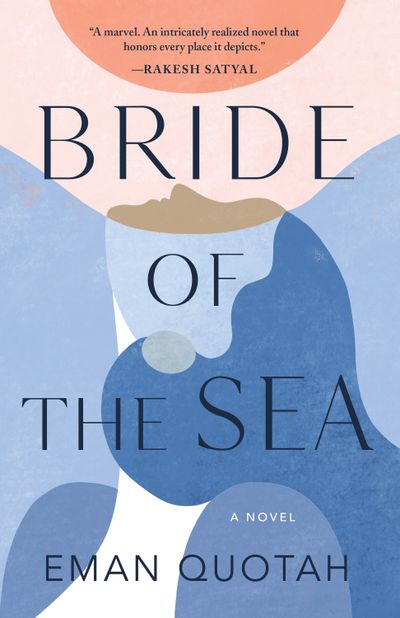Writer’s debut novel gives nuanced perspective of Saudi Arabia

To the American imagination, Saudi Arabia is not a country so much as a collection of shocking headlines. This lack of dimensionality is partly due to the country’s inaccessibility; for generations, Saudi Arabia has been a country closed to all but religious pilgrims, oil workers and the occasional state-approved journalist. And so the media became the chief portraitist of a largely hidden society, painting Saudi Arabia with broad, journalistic brushstrokes.
Where journalism constrains with word counts and column inches, though, novels offer the capaciousness to reveal a society in its complexity; to raise a headline-flattened people into three dimensions. In her engrossing debut novel, “Bride of the Sea,” Saudi American writer Eman Quotah does this with aplomb offering Americans a more nuanced view of the Saudi Kingdom through a cast of compelling characters and a sweeping plot that spans continents and decades.
Muneer and Saeedah are newlyweds who have ventured from Jidda to pursue degrees in 1970s Cleveland. From the start, theirs is an uneasy partnership. Muneer, a practical, faithful man, is bewildered by his moody wife. When she becomes pregnant, she begins to behave alarmingly, burying herself belly deep in snow, stripping down to her underwear and wading into an icy Lake Erie. She gives birth to a daughter, Hanadi, but, soon after, the couple divorce; Muneer has had enough.
While he returns to Jidda to finalize the divorce, Saeedah remains in Ohio with the baby, where she is supposed to finish her degree and then make the trip home, too. Instead, knowing that Saudi law will force her to give up Hanadi to Muneer when she turns 7, Saeedah absconds with her daughter, embarking on a peripatetic life of deception that will haunt the three members of this small, fractured family.
“Bride of the Sea” is another name for Jidda, a coastal city perched on the Red Sea, and Quotah conjures the metropolis and its denizens with rich, affectionate detail. A young Saeedah and her father have eyebrows “set high above their eyes, so they looked skeptical or like they were laughing at a joke no one else understood.”
In their youth, Muneer and his buddies drive off-road into the desert to drink illegal “gulp-size quantities of rum and schnapps” beneath a sky “so stacked with stars Muneer felt sure he could count the seven heavens.”
The novel sings in these early sections, when the writing luxuriates in moments of characterization and world-building. The abduction marks the start of a high-octane plot that encompasses geopolitical events such as the Gulf War and the 9/11 attacks, as well as imprisonments and detentions, sometimes at the expense of the family’s poignant conflict.
For instance, Saeedah never truly vivifies as a character, her choices never fully interrogated, her behavior continually confounding. Occasionally, and perhaps in an effort to avoid melodrama, the story feints away from emotional climaxes by leaping great expanses of time, which deflates some of the novel’s tension.
Still, the book artfully reveals a Saudi Kingdom that is “not only deserts and camels and oil sheikhs,” as one character wryly states. Quotah’s perspective is an important addition to American fiction.
Keija Parssinen, born and raised in Saudi Arabia, is an author and an assistant professor of English at Kenyon College.